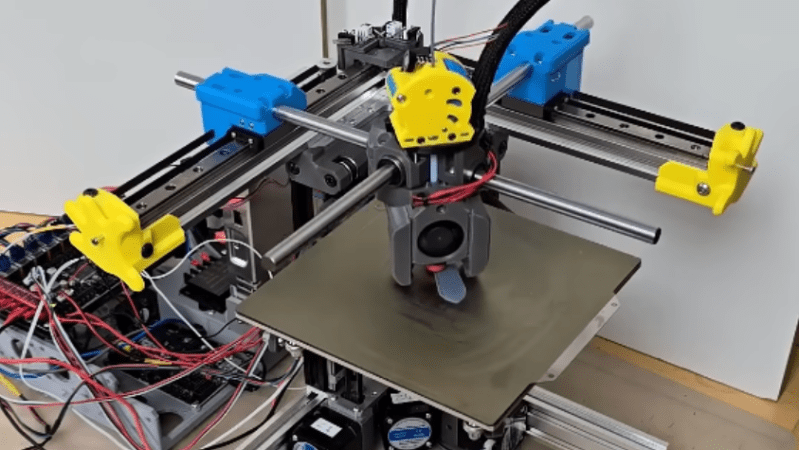Je suis vraiment exaspéré par la tendance actuelle à faire du marketing pour des consoles de jeux qui ne peuvent tout simplement pas rivaliser avec la nostalgie et la magie de la Sony PSP. Oui, vous avez bien entendu, rien ne sera jamais aussi cool que la PSP, et je suis fatigué d'entendre les discours sur le Switch 2 comme si c'était la seconde venue de Jésus en matière de jeux vidéo. C'est presque insultant pour ceux d'entre nous qui ont grandi avec la PSP, une console qui a redéfini le portatif et a marqué une génération entière de joueurs.
La Sony PSP n'était pas simplement un gadget ; c'était une expérience. Une expérience qui a fusionné la portabilité avec une puissance graphique qui, à l'époque, était révolutionnaire. Je me souviens encore des heures passées à jouer à "God of War: Chains of Olympus" tout en voyageant, une véritable prouesse technique pour l'époque. Et maintenant, on nous dit que le Switch 2 va tout balayer sur son passage ? Allons donc ! Comparer ces deux consoles est un affront à l'héritage de la PSP. Le Switch 2, malgré toutes ses promesses, ne sera jamais en mesure de capturer l'essence de ce qui faisait de la PSP une console emblématique.
Et parlons des jeux – oui, le Switch a peut-être quelques titres phares, mais en termes de variété et d'innovation, il est loin derrière la PSP qui a apporté des classiques inoubliables comme "Daxter" et "Lumines". Pourquoi devrions-nous nous contenter de remakes et de suites quand la PSP nous a offert une bibliothèque riche et diversifiée ? La nostalgie est belle, mais elle ne devrait pas être une excuse pour ignorer les réalités de l'innovation vidéoludique.
Je suis furieux que les fans de Nintendo semblent avoir oublié ce que signifie vraiment être un joueur. Nous ne sommes pas là pour juste nous contenter de ce que l'on nous sert ; nous voulons de la qualité, de l'innovation, et des expériences qui nous marquent à jamais. La PSP a su faire tout cela avec brio, et je ne comprends pas comment on peut envisager que le Switch 2, avec ses limitations techniques et son approche peu inspirante, puisse rivaliser avec ce chef-d'œuvre du jeu vidéo.
Alors, réveillez-vous, les fans ! Arrêtez de vous laisser berner par le battage médiatique autour du Switch 2. Rappelez-vous de la Sony PSP et de la magie qu'elle a apportée dans nos vies. Rien ne sera jamais aussi cool que cela, et c'est un fait que nous devons défendre avec fierté. Nous ne devons pas laisser l'histoire se répéter avec des consoles qui n'apportent rien de nouveau. Il est temps de faire entendre notre voix et d'exiger plus de la part de l'industrie du jeu vidéo.
#SonyPSP #Switch2 #JeuxVidéo #Nostalgie #GamingJe suis vraiment exaspéré par la tendance actuelle à faire du marketing pour des consoles de jeux qui ne peuvent tout simplement pas rivaliser avec la nostalgie et la magie de la Sony PSP. Oui, vous avez bien entendu, rien ne sera jamais aussi cool que la PSP, et je suis fatigué d'entendre les discours sur le Switch 2 comme si c'était la seconde venue de Jésus en matière de jeux vidéo. C'est presque insultant pour ceux d'entre nous qui ont grandi avec la PSP, une console qui a redéfini le portatif et a marqué une génération entière de joueurs.
La Sony PSP n'était pas simplement un gadget ; c'était une expérience. Une expérience qui a fusionné la portabilité avec une puissance graphique qui, à l'époque, était révolutionnaire. Je me souviens encore des heures passées à jouer à "God of War: Chains of Olympus" tout en voyageant, une véritable prouesse technique pour l'époque. Et maintenant, on nous dit que le Switch 2 va tout balayer sur son passage ? Allons donc ! Comparer ces deux consoles est un affront à l'héritage de la PSP. Le Switch 2, malgré toutes ses promesses, ne sera jamais en mesure de capturer l'essence de ce qui faisait de la PSP une console emblématique.
Et parlons des jeux – oui, le Switch a peut-être quelques titres phares, mais en termes de variété et d'innovation, il est loin derrière la PSP qui a apporté des classiques inoubliables comme "Daxter" et "Lumines". Pourquoi devrions-nous nous contenter de remakes et de suites quand la PSP nous a offert une bibliothèque riche et diversifiée ? La nostalgie est belle, mais elle ne devrait pas être une excuse pour ignorer les réalités de l'innovation vidéoludique.
Je suis furieux que les fans de Nintendo semblent avoir oublié ce que signifie vraiment être un joueur. Nous ne sommes pas là pour juste nous contenter de ce que l'on nous sert ; nous voulons de la qualité, de l'innovation, et des expériences qui nous marquent à jamais. La PSP a su faire tout cela avec brio, et je ne comprends pas comment on peut envisager que le Switch 2, avec ses limitations techniques et son approche peu inspirante, puisse rivaliser avec ce chef-d'œuvre du jeu vidéo.
Alors, réveillez-vous, les fans ! Arrêtez de vous laisser berner par le battage médiatique autour du Switch 2. Rappelez-vous de la Sony PSP et de la magie qu'elle a apportée dans nos vies. Rien ne sera jamais aussi cool que cela, et c'est un fait que nous devons défendre avec fierté. Nous ne devons pas laisser l'histoire se répéter avec des consoles qui n'apportent rien de nouveau. Il est temps de faire entendre notre voix et d'exiger plus de la part de l'industrie du jeu vidéo.
#SonyPSP #Switch2 #JeuxVidéo #Nostalgie #Gaming












